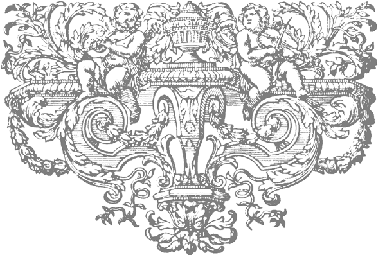![]()
A Franco-Flemish double-manual harpsichord,
![]()
Details of the original state of the instrument
A careful examination of the instrument has revealed that it was originally a Flemish 'transposing' double-manual harpsichord but, despite the ‘HR’ rose in the soundboard, there is a great deal of evidence which shows that this instrument was not made not by any of the members of the Ruckers/Couchet family. The rose itself appears to have been taken from a genuine Ioannes Ruckers instrument made in his early period before 1614, but this rosette does not fit into the hole in the soundboard into which it has been placed. On the other hand both bridges retain their original bridge pinning, and an analysis of the lateral placement of the bridge pins shows that these were spaced relative to one another using simple numbers involving the Antwerp duim (inch) and voet (foot). In addition empty holes in the soundboard for the 4' hitchpins and on the 4' bridge for the bridge pins indicate that there were the usual doubled pairs of strings for the e/g notes normally found on double-manual Flemish harpsichords (see the diagram of the keyboards a normal Flemish 'transposing' double-manual harpsichord shown below).
Schematic representation of the keyboards of a normal Flemish 'transposing harpsichord.
The upper manual has a block in the bass and a compass of C/E to c3 at normal pitch.
The lower manual has a compass of C/E to f3 at a pitch a fourth lower than the upper manual.
The 3 triangles at the top
represent the 3 original pairs of bridge pins and hitchpins for the
e/g![]() notes, all of which are still clearly evident on the 4' bridge and 4' hitchpin rail.
notes, all of which are still clearly evident on the 4' bridge and 4' hitchpin rail.
On this model of harpsichord there are the three sets of the doubled pairs of 4' bridge pins and hitchpins, each spaced from one another by an octave (12 notes) of strings as in the diagram above (the original doubled 8' bridge and hitchpins have been disguised by the addition of a second set of 8' strings). Therefore it is clear both from the relative string spacing and from the paired e/g
notes that this instrument was originally a Flemish transposing double-manual harpsichord with the usual upper-manual compass of C/E to c3 (short- octave bass) at normal pitch, and the lower manual had the normal C/E to f3 bass short-octave compass and was pitched a fourth lower as in the diagram above.
In addition, a study of the measurements of the instrument and the lateral spacings of the 8' and 4' bridge pins shows that it was designed and made in Antwerp using the Antwerp units of measurement the voet (foot) and duim (inch). No other country or city North of the Alps used the same unit of measurement found to have been used to make this instrument, so it can be assigned to Antwerp with a very high degree of certainty, not only because it uses the Antwerp duim and voet in its design and construction, but also because of the many characteristics it bears of the usual Antwerp construction style. However, although it is clearly an instrument made in Antwerp, many of the features of the instrument are completely different from those of a normal Ruckers double-manual instrument and, indeed, the way that the unit of measurement was used to design the lateral string spacing and the division of the keyboard spacings was also different. The instrument cannot therefore be attributed to any of the members of the Ruckers family who were also active in Antwerp in 1617 when this instrument was made.
This instrument
is therefore an extremely rare and unusual example of a Flemish non-Ruckers
double-manual transposing harpsichord made in Antwerp.
![]()
Important
Features of this harpsichord
![]()
A brief history of the musical and decorative states of the Franco-Flemish harpsichord
![]()
Details of the eighteenth-century states of this harpsichord
Details of the modern history of this harpsichord
![]()
A problem encountered in the ethical restoration of this harpsichord
![]()
Return to the main page of this section
![]()
